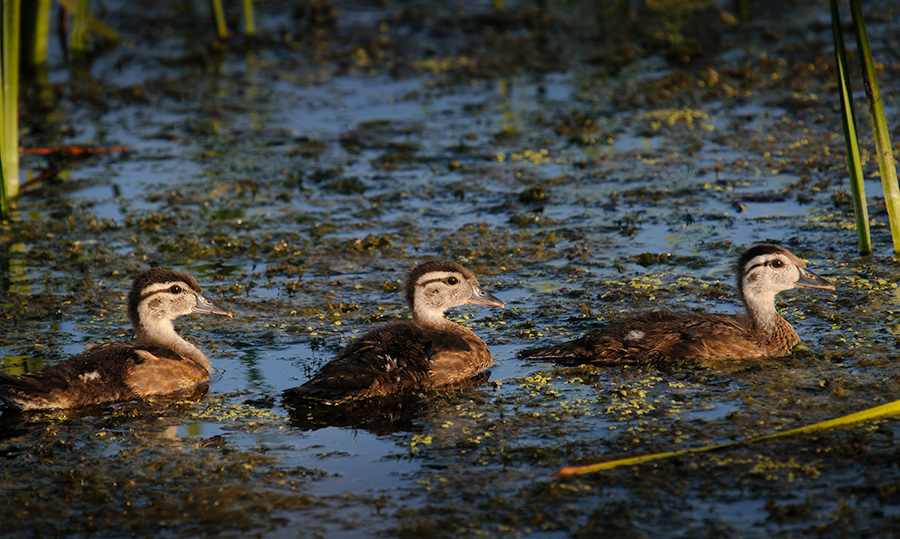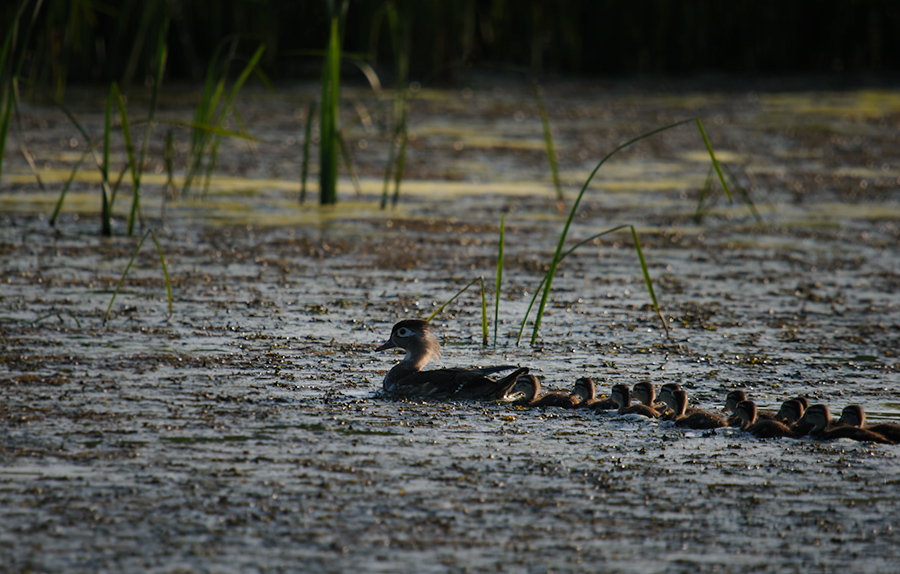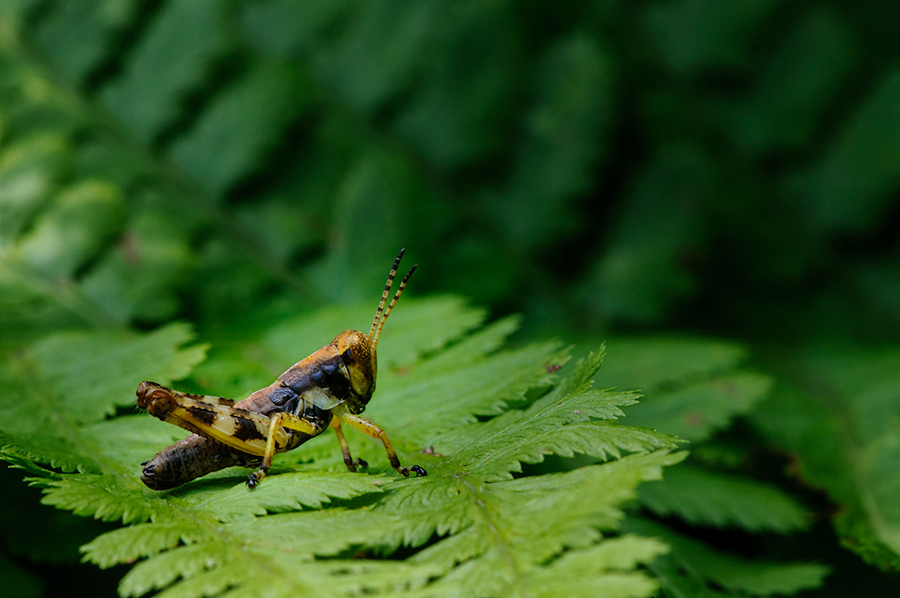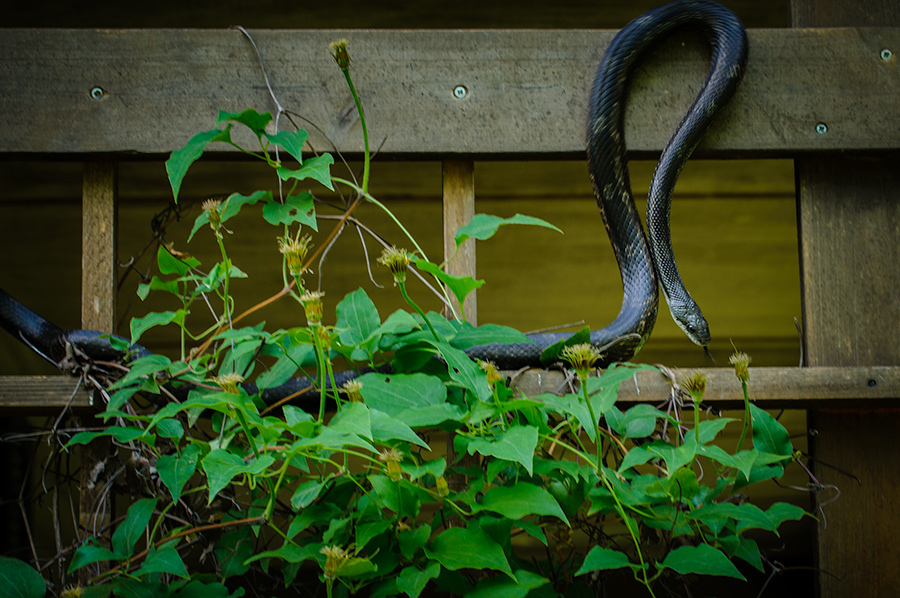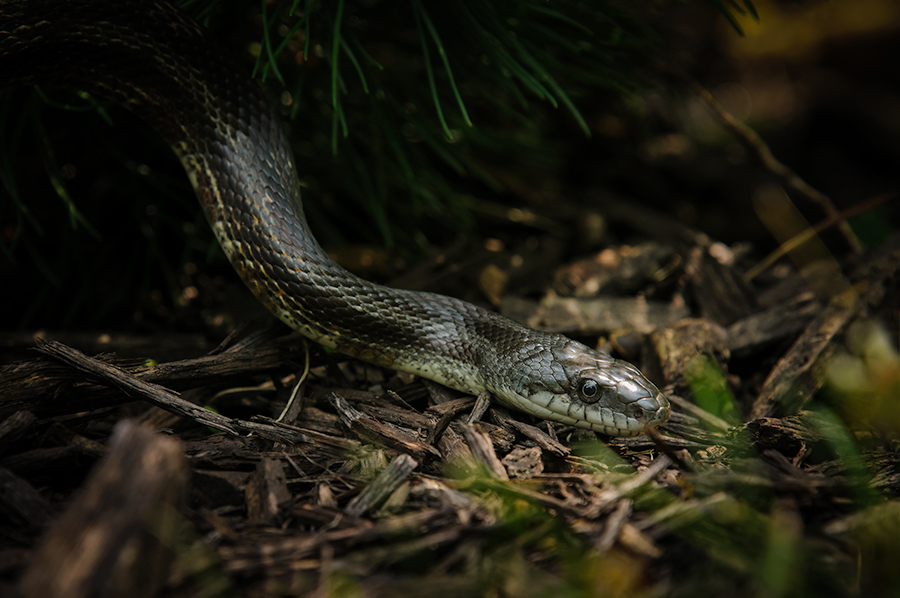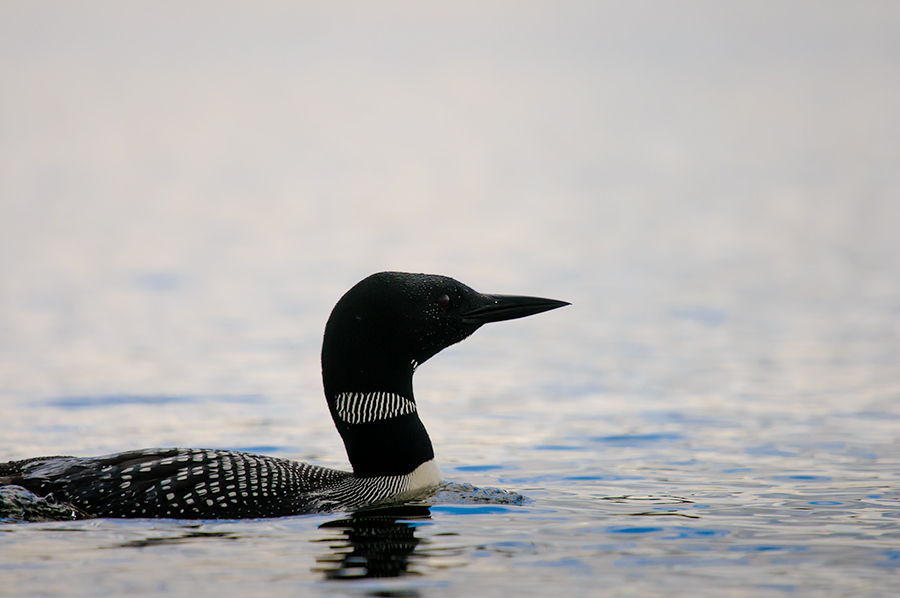
I spent the weekend in Northern Wisconsin and worked on a project that I had in mind since a few years already. My plan was to photograph ospreys, also known as "fish hawks", at a location that I had bookmarked during previous visits. The nest can only be reached by boat and I used my kayak to get there. To make a long story short, I saw the ospreys but rain and other circumstances did not allow to claim victory and come home with some good images. With other words, I got skunked! Wildlife photography requires sometimes a lot of patience and so the project remains on the list for another try maybe next year.

It wasn't all bad, I saw Bald Eagles, a Belted Kingfisher, and just before I returned to the boat ramp a family of Common Loons came out of the reeds. The male positioned himself between me and the female with her two chicks and he made a hell of a noise. The call of a loon is very loud and impressive. The light situation was everything but good. Behind me were huge thunderstorm clouds moving in and the only chance to make the click was to shoot into the sun. In order to maintain a fast shutter speed I dialed in ISO400 (as you know not my preferred way to photograph wildlife). A fill flash would have been helpful but because I try to take as few items as possible into the kayak, the flash light was, of course, in the car... :-o It was the first time that I had the Common Loon during summer in front of my lens. The only pictures I had so far were made during the winter season in Southern California. Their plumage looks much nicer during the breeding season and just watching them was very exciting. Both images are not cropped and the low perspective and clean background make them good keepers in my books.
I wished I would have had more time with these beautiful birds but the thunder was already rolling and I just wanted to get off the lake. Playing it safe is mandatory and dying for a picture isn't worth it...




